Tutorial: How to sew on the Meringue waistband
Yesterday, we showed you how to draft your own waistband for the Meringue skirt, since the original design has a simple facing at the waist. Today, we’ll just go through the steps for attaching it.
Cut out all the pattern pieces including the waistband and interfacing. Remember that you won’t need the waist facing pieces for this skirt since you’ve made a waistband.
Apply the interfacing to front and back pieces. Be sure to use a press cloth to avoid any iron mishaps.
The zipper is on the left side of the skirt. Sew the non-interfaced waistband pieces together along one seam as shown. This will be the waistband on the right side of the skirt. Sew the interfaced waistband pieces together along one seam as shown. This will be the waistband on the inside of the skirt.
Put waistband and interfaced waistband right sides together.
Place pins about 1 1/2″ from the top edge. This is where you’ll begin and end sewing. The unsewn portion is left open for the time being. Sew between the two pins.
Pin the waistband to the skirt, right sides together. Make sure the side seams match up.
Sew the waistband to the skirt.
Serge or pink the seam to finish it.
Iron the waistband, making sure that the seam you just sewed is pressed upwards, into the waistband.
Position the invisible zipper and install using this handy tutorial.
Once the invisible zipper has been installed, place the interfaced waistband over the zipper as shown. Sew the remainder of the seam closed. Stitch over the zipper coil all the way to the end. Do this for both sides.
Put a zipper foot into your machine. Sew 5/8″ from the edge or as close as you can get to the invisible zipper coil. Be sure not to catch the coil in your stitches. Before you reach the end, fold up the waistband about 3/8″ and backtack to finish.
Serge or pink the top of the waistband seam.
Trim and grade the corners of the waistband. Take care not to cut into the seam. Use a point turner to flip right side out. Check out this tutorial for point turner tips.
Iron the top of the waistband. Making sure that the inner waistband stays to the inside and doesn’t peep out into the right side.
Iron under 3/8″ of the interfaced waistband. There should be enough of the waistband to be caught when you stitch in the ditch.
Sewing slowly, stitch in the ditch. This will keep the inner waistband in place. And you’re through!

 Sign In
Sign In

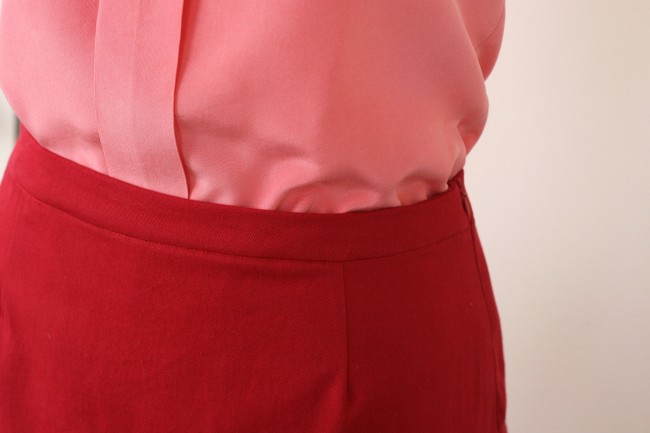

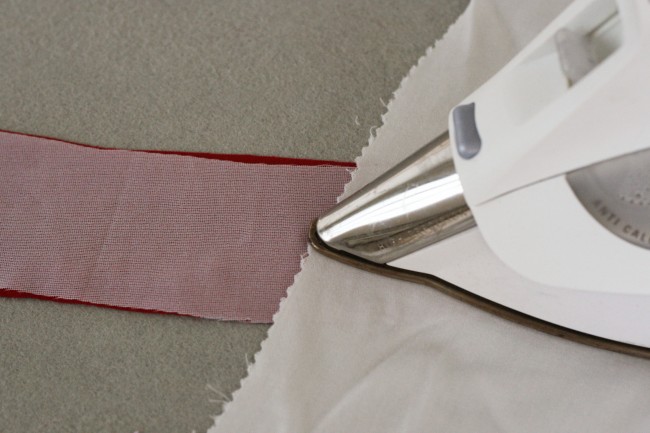

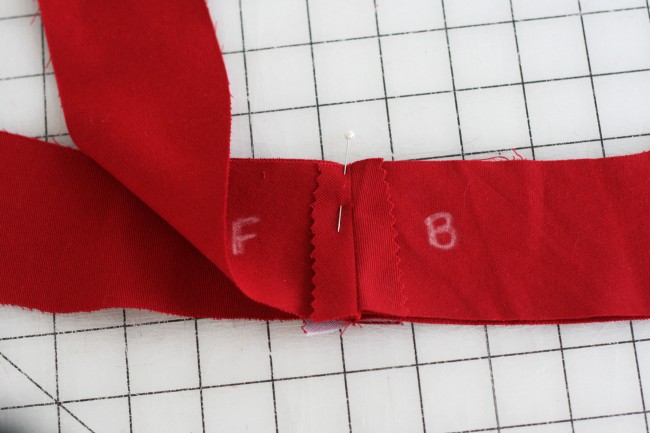
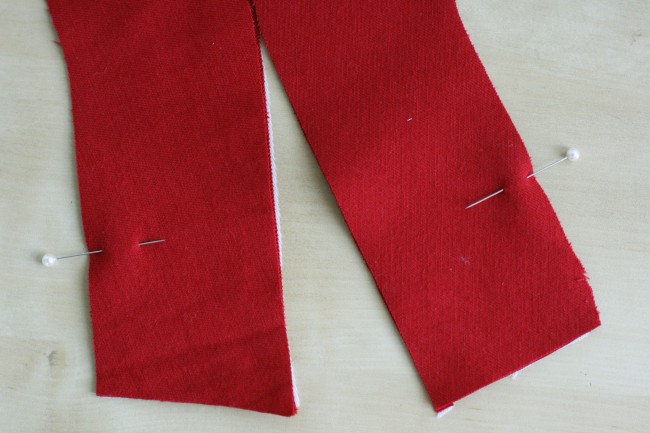
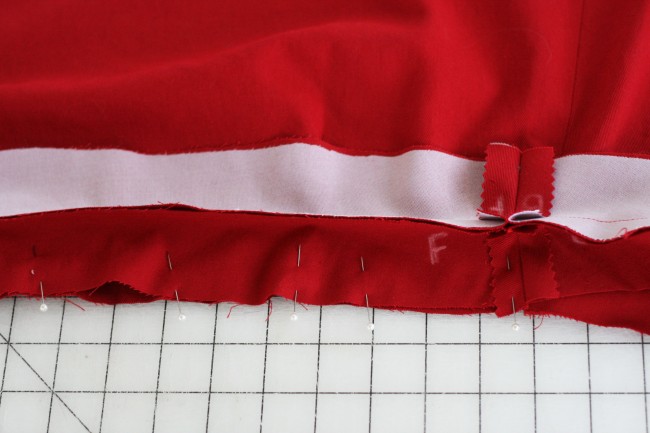
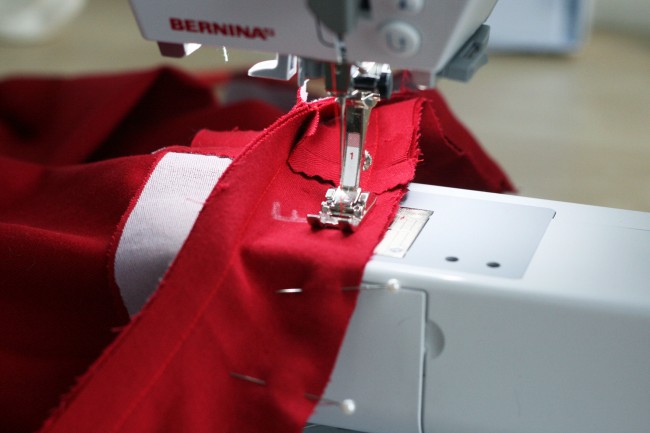
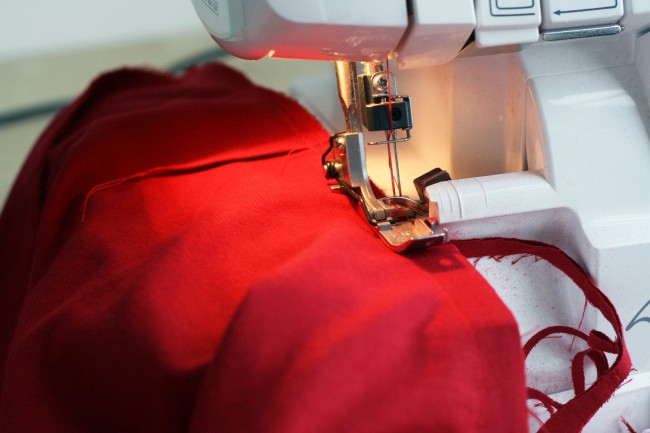
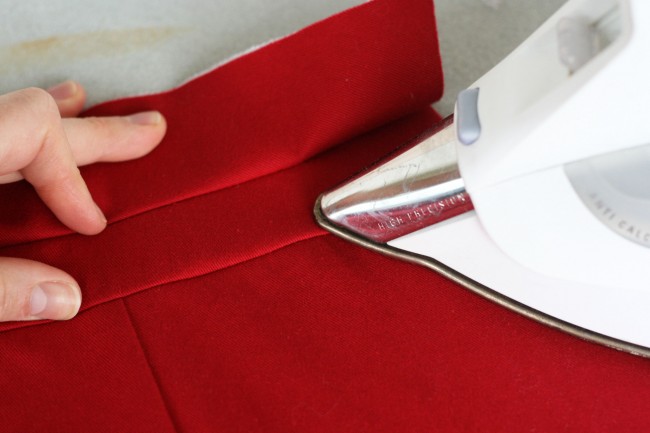
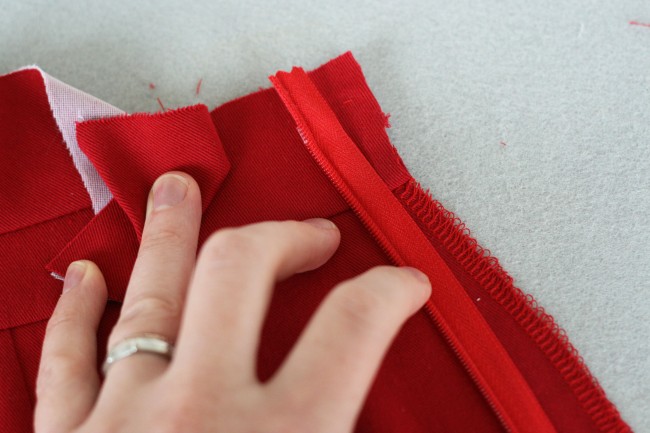

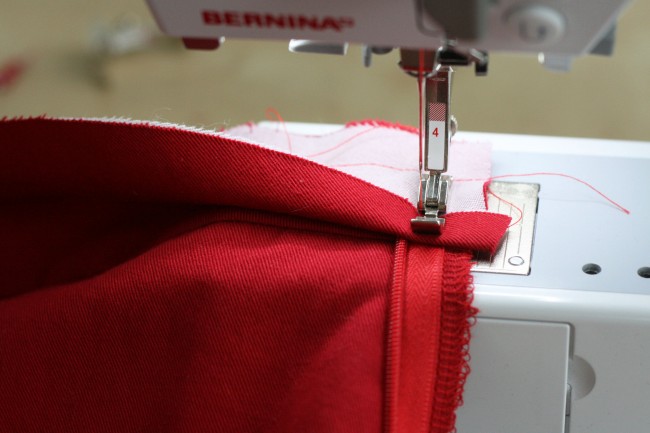
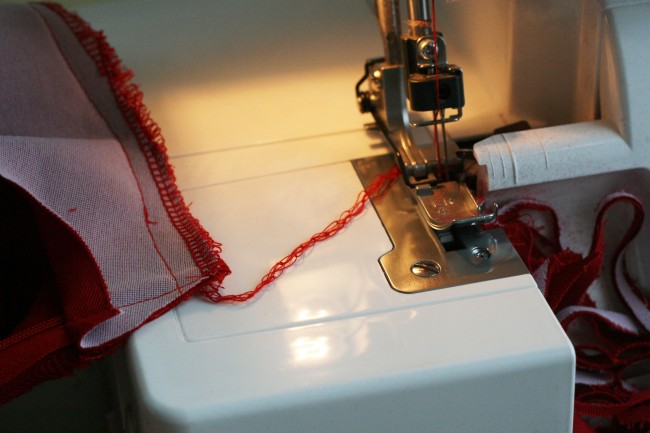
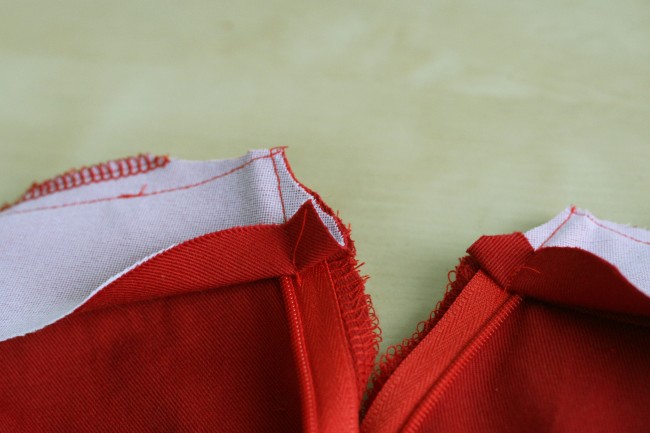
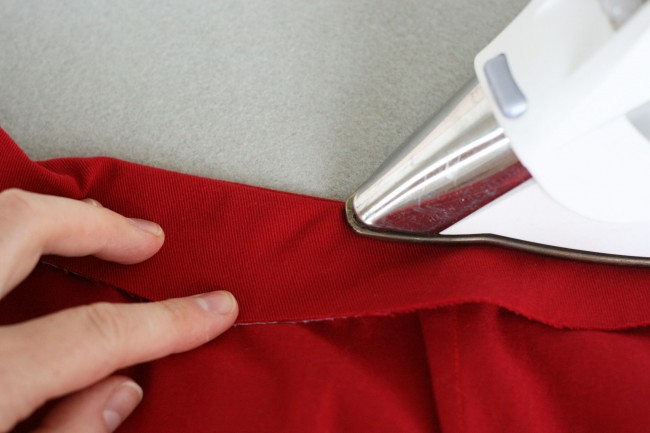
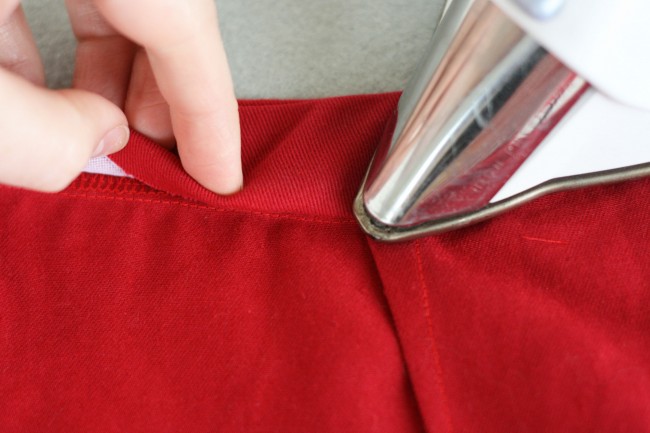
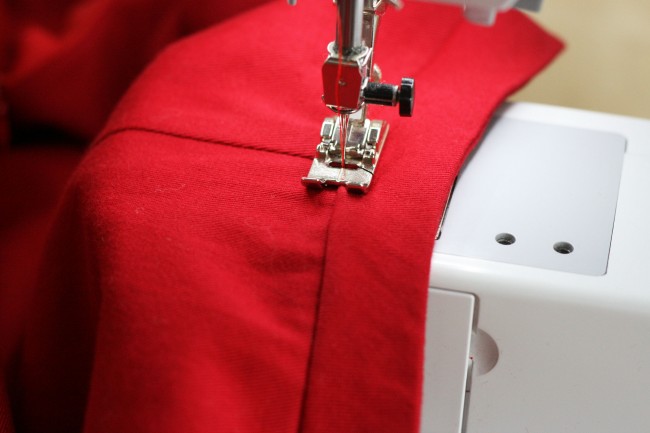
Comments
raquel from florida
November 17, 2011 #
Great tutorial! Can you show a picture of the finished zipper on the right and wrong sides?
Thanks!
CGCouture
November 17, 2011 #
Wanted to come out of lurking to say thanks for this tutorial, waistbands are one of those things that I sometimes goof up. OK, maybe I goof them up often…especially the corners by the zipper.
Sarah
November 17, 2011 #
Excellent tutorial and very timely. Meringue is on my to sew list. :)
Julie
November 17, 2011 #
thanks for the tutorial. what kind of interfacing do you use?
Sarai
November 17, 2011 #
It depends on the project and on the fabric, really. For fusibles, Caitlin and I both prefer a very lightweight interfacing, because the fusing actually adds more stiffness. So I often recommend choosing an interfacing a bit lighter than your fabric. Right now, we’re using a lot of a knit featherweight interfacing.
I also someimes interface with fabrics, like silk organza or muslin. It just depends what I’m sewing and how much weight and stiffness is needed. :)
Sarah
November 17, 2011 #
Do you use a special foot for in the ditch stitching? Mine is so abysmal that I usually end up hand stitching waistbands on the inside.
Sarai
November 17, 2011 #
The one shown is just a standard presser foot, but I often use an edgestitching foot (Bernina #10) for stitching in the ditch.
Shannon
November 17, 2011 #
Totally unrelated topic, but have you seen this 1940s pattern cover? It’s the Sencha with the Ginger! So cute! I need to get the Sencha pattern now so I can wear this chick’s outfit.
http://www.etsy.com/listing/85482770/1940s-blouse-pattern-simplicity-1403
Johanna
November 17, 2011 #
That IS very cute! :)
Jenny
February 18, 2012 #
THANK YOU for the WONDERFUL STEP-BY-STEP TUTORIALS. I am just returning to sewing.
Sincerely
Jenny
Erica
June 10, 2012 #
A bit confusing when you say, “Apply the interfacing to front and back pieces,” but mean only one set of the front and back pieces. Right? One front and back is interfaced, and one is not, even though you imply that they should all be interfaced? Thanks.
Gretchen
August 23, 2012 #
I have the same doubt as Erica, I’m getting lost somewhere between sewing the right side of the facings together to when they are sewn to the skirt and how tomplace them! Please help! I’m stuck in my Meringue and I’m starting to get frustrated!
Gretchen
August 23, 2012 #
Hi Erica, I found this tutorial and together with Sarai I think I have it figured out!
http://seekatesew.blogspot.com/2012/02/sewing101-facings.html
Michelle
January 8, 2013 #
how would you alter this or do it differently for a lined skirt with this type of waistband?
elia
March 15, 2014 #
thank you so much for this super tutorial!